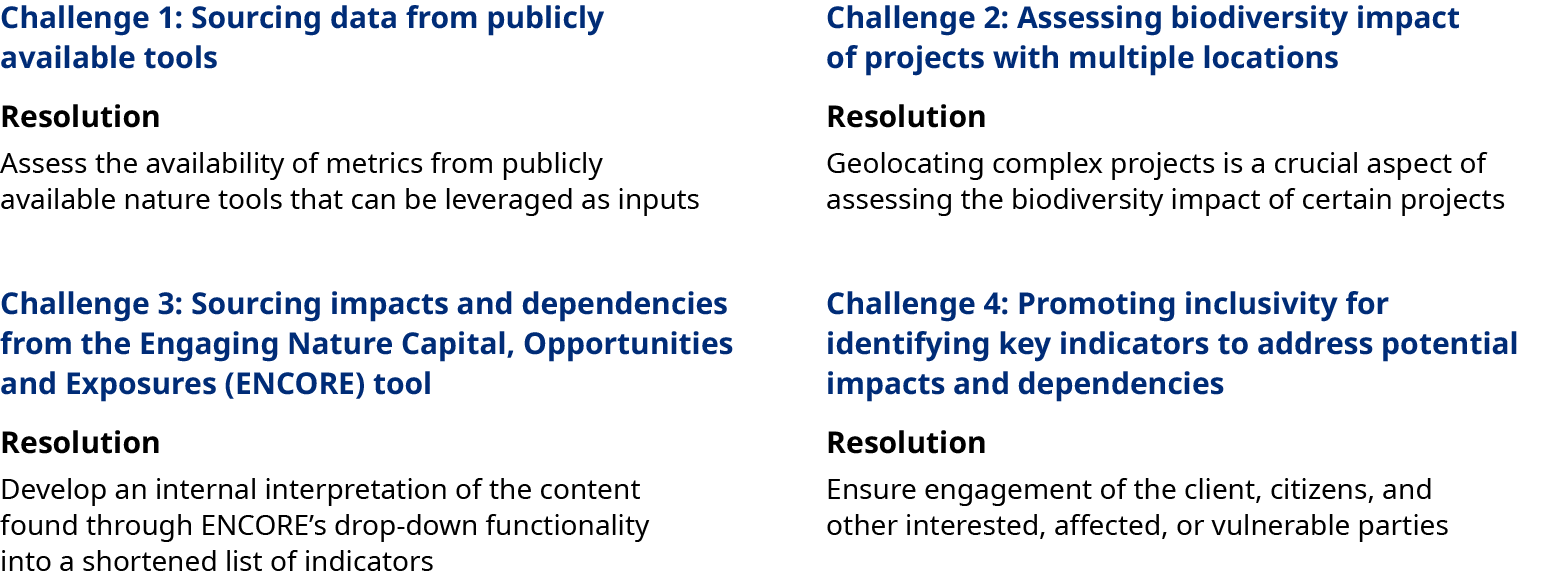Nature is important to African societies and economies. Rich with natural capital, the continent has a wealth of indigenous plant and animal species as well as vast reserves of minerals. The problem: It’s losing this necessary biodiversity at an alarming rate, caused by a few key drivers of change.
Nature loss is a global problem which countries, regulators, and industry are addressing. Two important global initiatives are: The Global Biodiversity Framework, and The Taskforce on Nature-related Financial Disclosures (TNFD).
As major financiers of economic activity, banks must be at the forefront of shifting financial flows to halt and reverse nature loss. They need a reliable, quantitative way to measure the impact and dependencies of their operations and portfolios on biodiversity, reduce risks, and promote nature-positive outcomes to build resilience. Several methodologies have been developed to help banks and other financial institutions track their progress and provide all market participants with quantitative benchmarks.
Why preservation of nature in Africa matters
Making up 20% of the planet's land area, Africa is rich with natural capital. Many of the world’s most iconic animals, including a quarter of all mammal species and one-fifth of all bird species, live in Africa. The continent also has around one-sixth of the world’s remaining forests, including those that comprise the Congo Basin, a 240-million-hectare rainforest straddling eight African countries and supporting the livelihoods of 80 million people in the region.
Africa's extensive natural assets and biodiversity provide invaluable ecosystem services to the continent and the planet. More than 62% of Africa’s rural population rely on the continent’s diverse natural ecosystems for their food, water, energy, health, and livelihoods. In some African regions, marine and coastal ecosystems contribute more than 35% of the gross domestic product. Two marine ecosystems along Africa’s west coast — the Benguela Current and the Canary Current — contain a continuous upwelling of nutrient-rich deep water that provides 20% of the world’s fish harvest.
Thus, it is important for institutions with an economic development mandate in Africa, such as the Development Bank of Southern Africa (DBSA), to understand that sound management of Africa's natural capital is inextricably connected to their success over the long run.

Africa is losing natural capital at an alarming rate
Africa’s rich biodiversity is under duress. The key drivers of change include the growth in the population, urbanization, and an array of other human-driven economic activities such as mining, and agricultural expansion. Also threatening nature are the direct unsustainable exploitation of resources, climate change, pollution, the spread of invasive species, and uncontrolled fires.
Since 1970, Africa has experienced a two-thirds (66%) decline in wildlife populations — 27% faster than the global average. An assessment by the International Union for Conservation of Nature (IUCN) of the continent’s mammals, birds, amphibians, corals, and cycads found that all had deteriorated steadily between 1993 and 2016. While the timeframe for extinction may vary, there are many species currently vulnerable, endangered or critically endangered.
 More than 6,400 animal species and 3,100 plant species in Africa are at varying risk of extinctionThe Sahara and Sahel Observatory
More than 6,400 animal species and 3,100 plant species in Africa are at varying risk of extinctionThe Sahara and Sahel Observatory
DBSA is actively engaged in addressing nature loss
Banks can influence financial flows to halt and reverse nature loss. Multilateral development banks like the DBSA have a particular responsibility, given their mandate to promote economic growth through financing sustainable development projects. To do this, they need a reliable, quantitative way to measure the impact and dependencies of their investments on nature.
Africa was one of the regions where financial institutions took part in a pilot program to test and refine the TNFD framework during its development.
Insights from the Africa pilot showed that financial institutions face several critical challenges in data, impacting their ability to accurately assess the environmental impact of large-scale projects. In 2023, Financial Sector Deep (FSD) Africa conducted a review of the availability and coverage of nature-related data for Africa by 22 mainstream data sources that yielded several insights. Among the key insights about Africa is the fact that data sources lack a consistent taxonomy, and geographical coverage is not as granular as for other regions. In general, there is more nature-related data available for African countries that are signatories to sustainability initiatives, such as the Paris Agreement (2015), and the Global Biodiversity Framework (2022).
This challenge is amplified for projects with complex geographies, such as many in Africa. Granular biodiversity information in such situations typically falls short of what is available in developed markets like Europe and North America.
The DBSA, as a government-owned development finance institution with the mandate to promote sustainable development across the African continent, participated in the Africa pilot program and has some useful experiences to share.
On its journey to integrate nature and biodiversity, alongside climate, into its decision-making, DBSA is complementing its embedded Climate Policy Framework with an Integrated Biodiversity Strategic Framework (IBSF).
This white paper is a case study of their methodology in action, providing insights and learnings for any organization financing large-scale projects on the continent. Having tackled certain data challenges head-on, the DBSA developed an approach and suggests recommendations for African banks to pinpoint the nature and biodiversity risks associated with large-scale projects.


